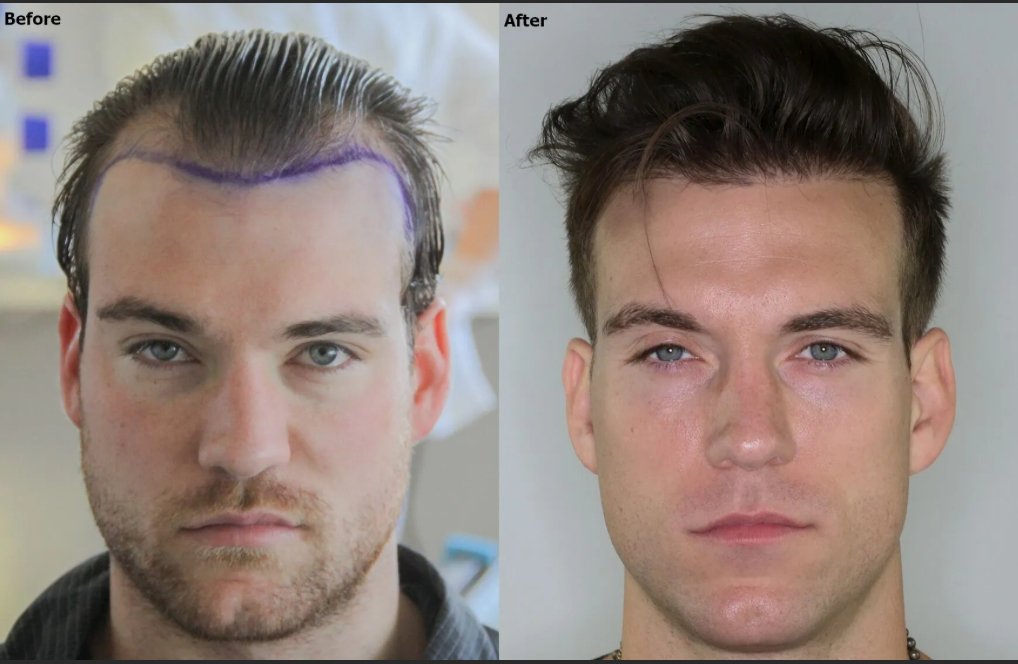Are You A Candidate For A Hair Transplant Procedure?

Key Takeaways
-
A detailed assessment by a qualified hair restoration expert is critical to see if you're a good candidate. Key factors include health, hair loss stage, and donor hair availability.
-
Ideal candidates are healthy, have a stable pattern of hair loss, and maintain realistic expectations about the results possible with their available donor hair.
-
Post-procedure care and follow-ups are essential for success. Proper wound care, using recommended products, and attending check-ups support healing and natural-looking results.
-
Having enough healthy donor hair is crucial. The donor area's density, texture, and color directly impact the procedure's success and future outcomes.
-
Timing matters for stable results. Patients with evolving hair loss patterns, especially younger individuals, should wait to ensure long-term aesthetic consistency.
-
Origenere hair transplant kits make recovery easier and faster by providing specialized pre and post-care products leveraged globally to support healing and enhance the hair growth progress.
Introduction
Experiencing hair loss can affect how you feel about yourself. Luckily, new ways to restore hair are on the rise and range from topical botanicals to surgical procedures like the hair transplant procedure. A hair transplant is a long-term fix. It moves hair follicles from a donor site, usually the side and back of your head, to the part you have lost hair, the recipient area. All of the strands are your strands.
If you are thinking about getting this procedure, it is important to see if you are a good candidate. You should also learn about what can affect how successful it is. Check out transplant success rates.

Determining Your Eligibility For A Hair Transplant
A hair transplant can change your life, but it isn't the right choice for everyone. To see if it's a good fit for you, a detailed check of your health, hair loss stage, and personal needs is needed. Speak with a qualified expert, it is incredibly helpful to make an informed decision. This could be a hair transplant surgeon, hair clinician, dermatologist or plastic surgeon who focuses on hair restoration.
In the consultation, they will look at your medical history and examine the scalp. They will also talk about what you hope to achieve. This check will help find the best treatment that matches your situation for the best results. Your care after the procedure, like taking medicine and going to follow-up appointments, is key to making sure it works long-term.
Interested in a consultation? Speak to an hair restoration expert with our partner: AlviArmani International.
Ideal Candidates for Hair Transplant Surgery
Even though every case is different, Ideal candidates for hair transplant surgery have some common characteristics.
- Healthy Patients: Minimal medical issues that could affect the surgery or healing. Able to maintain regiment for healthy hair. Health hair and a strong hair routine helps transplanted follicles grow well in their new spot and is crucial to a successful hair transplant.
- Realistic Expectations: It is equally as vital to know what a hair transplant can not provide as what it can provide. The goal is to create a natural-looking hairline and thickening hair in the needed areas. Different providers will have different capabilities in their ability to provide full coverage.
- Stable Pattern of Hair Loss: There has not been any sudden loss of hair which may indicate ability to grow back. Donor area remains full with healthy hair.
Factors That Affect Your Eligibility
Several characteristics can affect your eligibility as an hair transplant candidate. The most important factor is having enough healthy donor hair. The donor area needs to have plenty of good hair follicles for the transplant. Things like hair texture, color, and density at the donor site may also play a part in the success of the transplant.
Your health and age are important as well. Some medical issues or the use of certain medications might affect how well your hair grows or how well you heal. Younger patients should allow sufficient time for their hair loss to settle to reduce the need for multiple procedures.
Lifestyle choices can also affect hair growth and how well the procedure goes. For example, smoking and diet can make a difference. Drinking alcohol in close proximity to the procedure or in excess may hinder results by increasing bleeding.

How Much Donor Do You Have To Donate?
During your initial visit the surgeon will check your donor area carefully. They will look at things like hair thickness, curl and color. Based on this information and their own skill the determination will be made as to whether enough grafts are available to give you the coverage and thickness you want. The larger the area needing to be covered the greater the importance of the donor area.
Remember, your donor hair is limited. The surgeon will plan the procedure not only thinking about your hair loss now but also what might happen in the future. This future proofing helps them use your donor hair wisely. It also creates natural looking results that withstand the test of time.
Factors Affecting Donor Supply
- Prior hair transplant operation can lead to depletion of donor site, particularly if performed poorly.
- FUT Hair Transplant will generally deplete the donor region more aggressively than the FUE hair transplant procedure.
- Scar or Scarring
- Scars or Scarring can lead to damaged tissue and hair follicles and may lead to diminished donor area
- Environmental damage
- Poor Hair Routine or Hair Health
- Advanced Hair Loss
Willingness To Commit To Post-Procedure Care and Follow-Up Appointments
Undergoing hair restoration surgery is a commitment. The procedure is just the start of getting thicker hair. Your dedication to caring for your transplanted hair follicles afterwards is critical to your success. This care can really affect how fast you heal and how well the transplant works.
You need to carefully follow your hair restoration surgeon's directions on taking care of your wounds, using medication, keeping your scalp clean and using the right products. The optimal routine can have you back at work in less than a week and growing hair beginning at three months.
You should also attend regular follow-up appointments. These visits are vital for evaluating your progress with healing and hair growth alike. At these appointments, your surgeon will look at the surgery site, answer your questions and give you advice on how to boost hair growth.
Remember, hair restoration is a process. Your commitment to post-surgery care is very important to reach the results you want. Optimize your post-care routine for a fulfilling hair transplant experience.
Realistic Expectations For The Outcome Of The Hair Transplant
Your surgeon is not a magician. They will only be able to give you what you have. If your recipient site, the bald area, is considerably larger than the donor site, full coverage is not amenable. Number of grafts available must be equal to the number of grafts needed.
Hair replacement surgery can change how you look, but it's important to have realistic expectations for a good experience. During the consultations, talk openly about what you want with your surgeon or expert. They will give you a realistic idea of what is possible based on your donor area and your own unique features. An honest conversation upfront helps you set the stage for a happy hair restoration journey.
Hair restoration surgery, like other cosmetic surgeries, won't give you instant results. Hair grows slowly, and getting a natural look takes time.
Don't expect to see a full head of hair right away. It is normal to lose some of the transplanted hair first in a shedding phase prior to new hair growing in the area. Optimizing your product routine may accelerate this process. You should be patient as your scalp heals and the grafts being to grow new hair.

The Right Time For A Hair Transplant
Choosing the right time for a hair transplant is a personal choice. Many things can affect your decision. Getting married soon? Graduating? Reunion? There isn't a perfect age for everyone but it's important to know how much hair you have lost.
Stable Hair Loss Pattern
A stable hair loss pattern is very important when thinking about hair transplantation. This means having a clear and steady pattern of hair loss. It is usually linked to androgenetic alopecia, also known as male pattern baldness/ female pattern baldness. With this condition hair loss happens slowly, and predictably.
When a person has a stable hair loss pattern, the surgeon can better predict future hair loss. This helps them plan where to place the hair grafts. It ensures that the transplanted hair will look natural and blend well with existing hair. This way, the hairline design will fit nicely with your facial features as hair loss continues.
On the other hand, getting hair transplantation while experiencing active and changing hair loss can lead to poor results. The transplanted hair might seem thicker than the other hair. As hair loss goes on, this could mean extra procedures and make the overall results more complicated.
This is particularly of concern in younger patients. Younger individuals have evolving hair loss characteristics. These evolving features may lead to difficulty predicting extent and ultimately unnatural looking results.
Age is just one part of the picture. A full evaluation by a qualified expert is necessary for full insights. They should consider the stage of hair loss, the availability of donor hair and personal goals to decide the best time for your hair transplant.
Conclusion
In conclusion, figuring out if you can get a hair transplant depends on several things. You need enough donor hair. You should also be willing to take care of your hair after the procedure. It’s important to have realistic expectations about the results and to see if your hair loss is stable. Timing is key too; your age and the stage of your hair loss matter for the best results. A good hair transplant needs a thorough check to see if it will meet your needs. If you are thinking about getting a hair transplant, talk to a qualified specialist to find out more about your suitability.
Frequently Asked Questions
Who Is The Ideal Candidate For A Hair Transplant?
An ideal person for a hair transplant should be healthy, have enough donor hair, and have realistic views about what their donor is able to provide.
How Long Does It Take To See Results From A Hair Transplant?
After transplant surgery, you will see hair growth happen slowly over a few months. It can take up to a year to see the complete effects of hair restoration as new hair begins to grow. Hair products and routine can accelerate this process for optimal results.
Can Women Undergo Hair Transplant Procedures?
Yes! Women who have hair loss, like female pattern baldness, can have hair transplant surgery. Often women will opt for No Shave FUE procedure for minimal visibility and maximum privacy. For more information on female hair restoration read hair transplantation in women.
What Are The Long-Term Expectations of Undergoing A Hair Transplant?
With hair transplant success, you can see natural-looking hair grow in the areas where the hair is transplanted. It might not give you a a full head of hair, but hair restoration through transplantation provides a permanent solution.
How Does Age Affect The Success of A Hair Transplant?
Younger people may keep losing hair after the procedure. If done too early, this may lead to unnatural looking results.
On the other hand older scalps may grow hair more slowly and heal more slowly. This can affect how successful the transplant is.
As such, while age is just one factor, careful consideration should be given to treatment plans for patients that are too young to ensure it is a suitable option.







Leave a comment